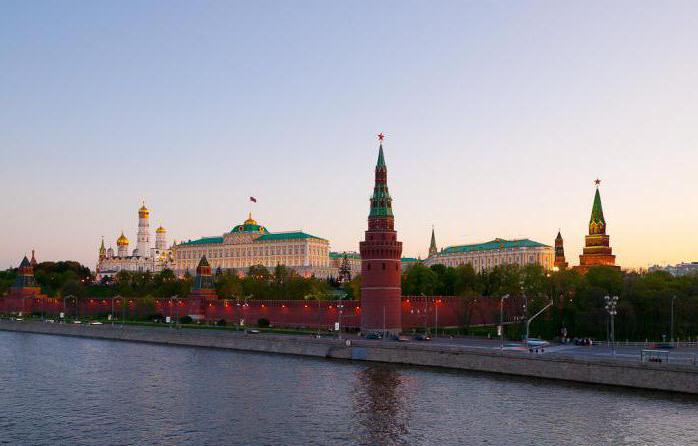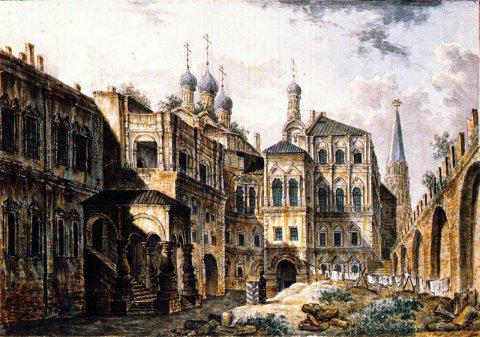The amusing palace is part of the Kremlin buildings. This building is interesting in that it was the first boyar estate in the area. The fact is that the main space here was built up with royal houses, utility rooms. Therefore, the appearance of a residential estate here can be considered as a very remarkable event from an architectural point of view.
Location
The amusing palace is located between two Kremlin walls. It is located in a rather narrow space. However, the skill of an unknown architect was manifested in the fact that he managed to place not only a residential building on a fairly small area, but also a garden, a porch and some outbuildings. The estate is located between the Commandant and Trinity towers. This location testified to the special location of Tsar Alexei Mikhailovich to its owner - his father-in-law, I. Miloslavsky. The amusing palace was built in 1651. The peculiarity of its location was that it was in the center of the plot with a front door in the south and a courtyard in the north. After the death of the original owner, the palace went to the king and was connected to his dwelling with the help of various passages. This structure is interesting in that it was built of stone, which was rare for the time in question.
Architecture
The building has a square shape in section, however, in the middle is divided by a passage. Its buildings are interconnected by a special travel arch. It is interesting in that it became one of the stages of stone construction in the capital, which was just beginning at the time in question. The facade was divided by floors, which also indicates a high level of architecture. The amusing palace is notable for the fact that it is decorated with white-stone decor - an art known since the time of Ancient Russia and which became quite widespread subsequently. Living rooms are located on the principle of enfilade, which makes this building related to the famous Terem Tsar’s tower. But the Amusing Palace of the Moscow Kremlin is especially famous for the fact that it houses the house church of the Praise of the Blessed Virgin Mary. This temple is harmoniously inscribed in the volume of the main building. The church is in the eastern facade. On the west side is a flat platform with hanging gardens that served as a porch.

Further fate
The amusing palace in the Kremlin, being originally a dwelling, subsequently turned into a venue for theatrical performances for the imperial family, from where it got its name. Then the princesses lived here. However, under Emperor Peter I, he lost his mission: the new ruler, who transferred the main cultural center to St. Petersburg, placed the Police Order here. At the beginning of the XIX century, the headquarters of the commandant of Moscow was located here.

In the same century, a plan was drawn up for the reconstruction of the palace. Architect I. Egotov decided to redo the eastern facade and make it the main building. Therefore, a new, additional northern facade was added to the palace, and the interiors were finished in the then popular pseudo-Gothic style. Unfortunately, the house church, which was the best part of the entire structure, was abolished. A new element was an attached balcony on pillars in the form of egg capsules. However, in the second half of the same century, N. Shokhin tried to restore the building to its original appearance, but his project was only a feeble attempt to stylize the old look of the building.
Nowadays
The foundation of the Fun Palace was an important stage in the architectural construction of the capital. It was one of the most interesting architectural structures of its time. For some time, the building served as an apartment for Stalin. Today, there are Kremlin services.
In the early 2000s, restoration work was carried out in the building, during which the facades of the church were restored, as well as some elements of the interior. During the work, a unique find was discovered - a rare example of white stone carving with a theme that is generally not typical of the 17th century. The drawing contained images of fantastic creatures and tournaments. The significance of the monument is that it is an excellent example of a boyar residential estate, which is quite well preserved to this day.